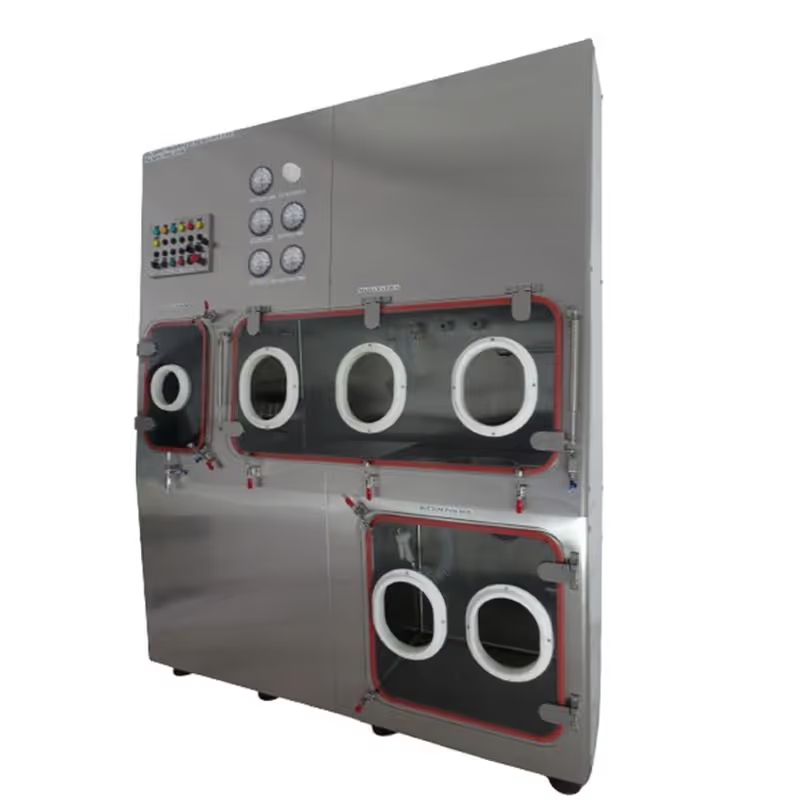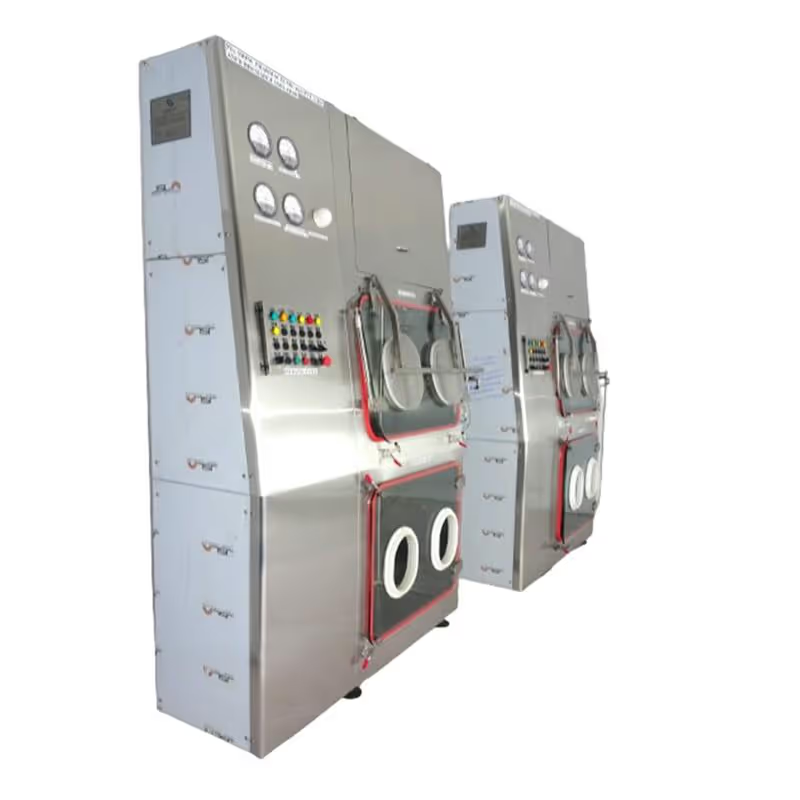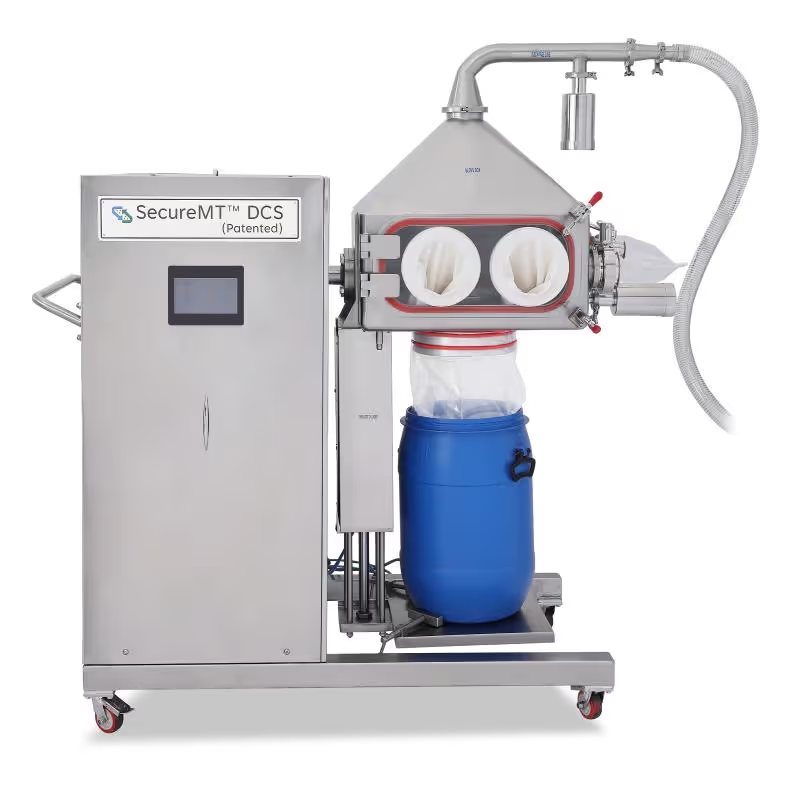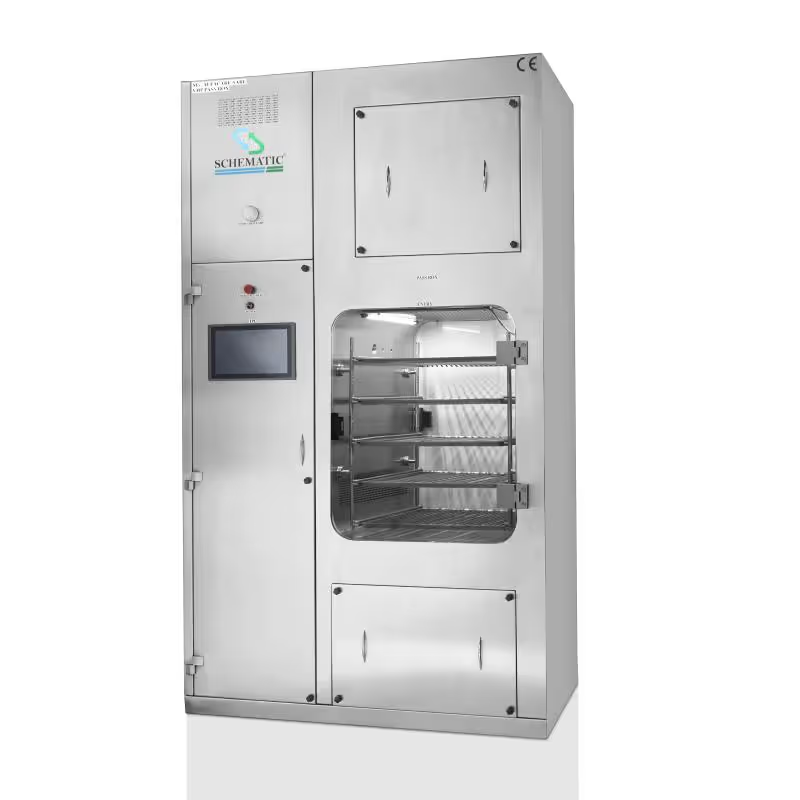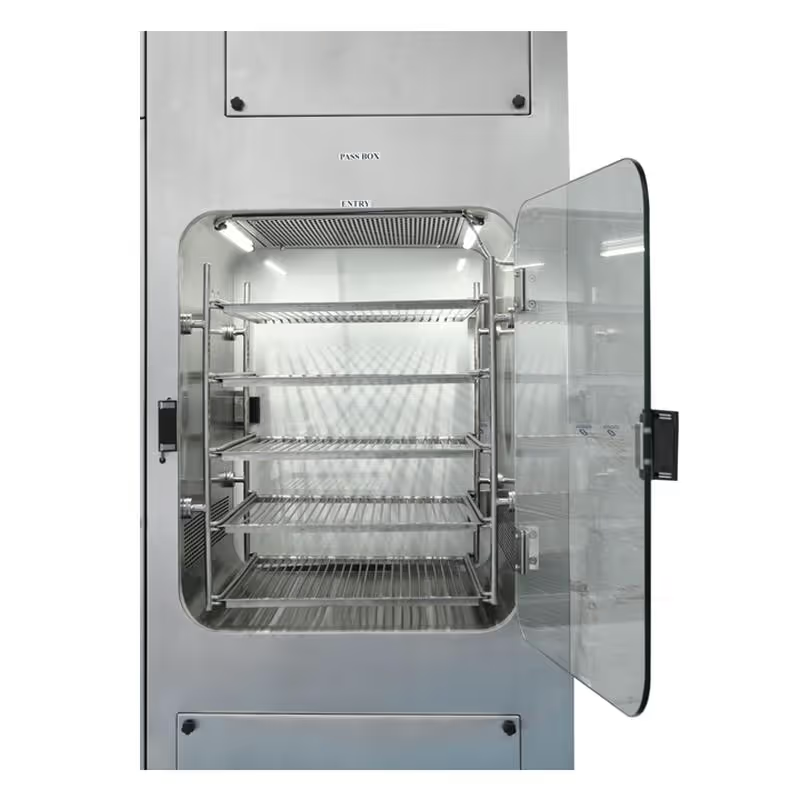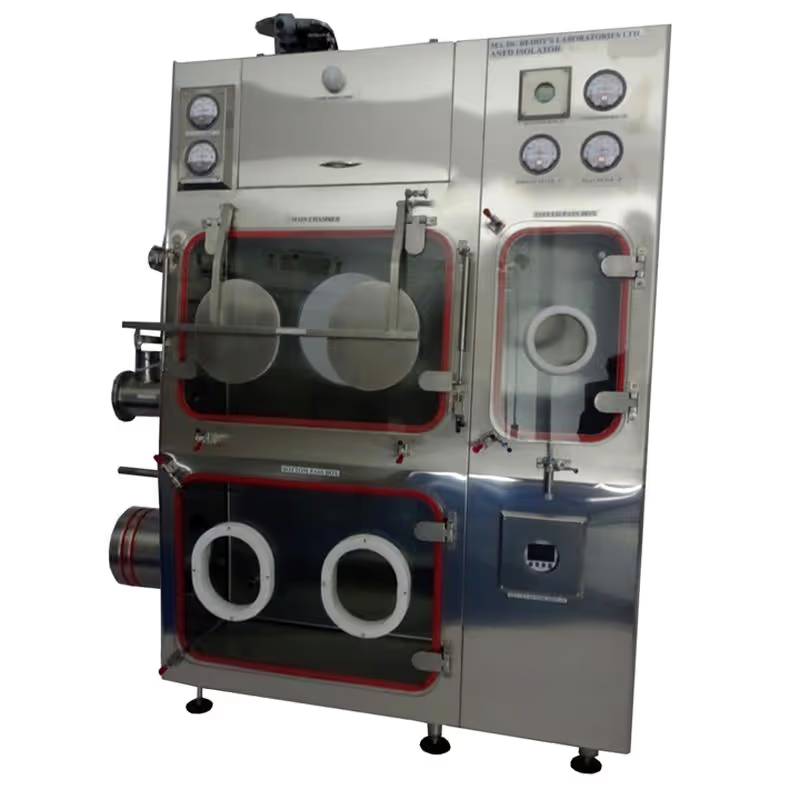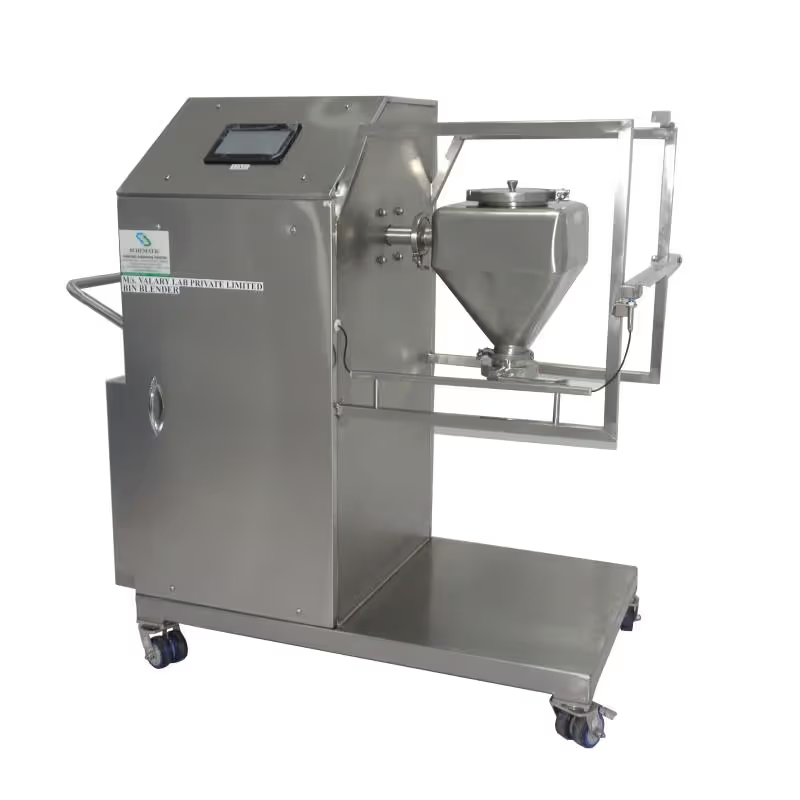Pharmaceutical: API & Bulk Drugs


The manufacturing of APIs and bulk active substances involves multiple chemical and physical unit operations that demand stringent control of environment, cross‐contamination risk, and operator exposure. Key process steps and associated equipment include:
- Chemical synthesis, reaction /& intermediate steps: Reactors, stirred vessels, distillation units, crystallizers, etc.
- Filtration, Separation & Washing: Pressure or vacuum filters, centrifuges, Nutsche (pressure) filters, membrane separations
- Drying & Solvent removal: Vacuum tray dryers, rotary dryers, lyophilizers, spray dryers, drum dryers
- Milling, Micronisation & Particle size reduction: Jet mills, ball mills, hammer mills, air classifiers
- Sieving, Screening and De-agglomeration: Vibratory sieves, de-lumpers, sieving stations
- Blending, Mixing, and Granulation (intermediate drug substances): High-shear mixers, tumble blenders, granulators
- Charging, Transfer and Material Handling: Drum unloading, powder transfer, big bag discharge, IBC handling, conveying
- Sampling, QC and Analytical modules: In-process sampling stations, quality control isolators
- Packing, Pack-off and Formulation hand-off: Container filling, liner systems, bagging, sealing
Throughout all these stages, the challenges include controlling dust, ensuring containment for high potency or toxic substances, preventing cross-contamination, and enabling efficient cleaning and maintenance.
In modern API manufacturing, isolators rated at OEB-4 / OEB-5 (or better) are increasingly common to protect operators and the environment from exposure to trace quantities of potent compounds.
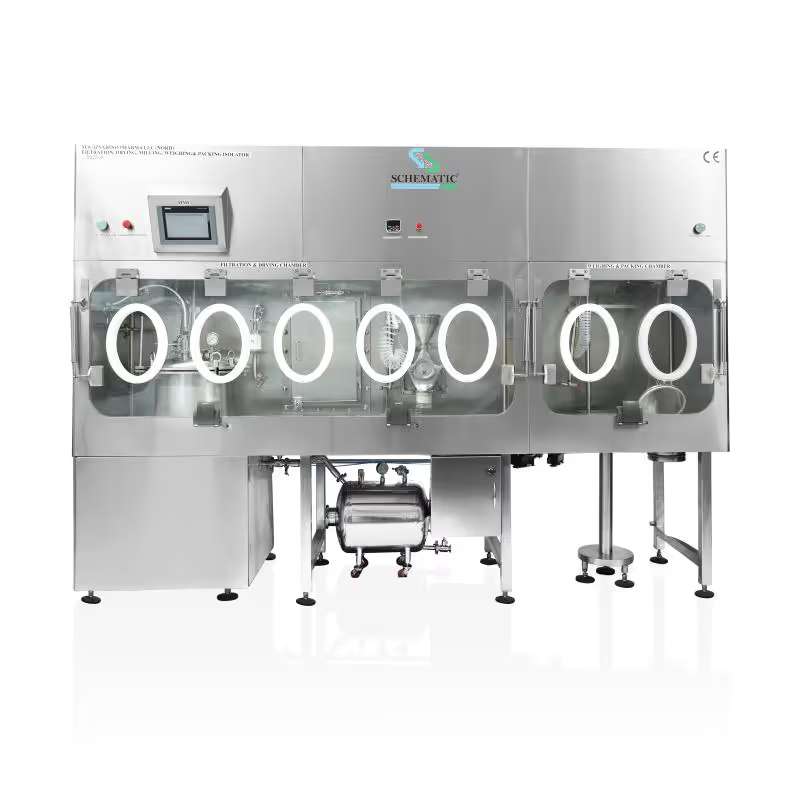
When handling APIs, especially potent compounds, you must manage:
- Operator safety and exposure limits; Prevent inhalation or dermal contact with hazardous powders or vapours.
- Cross-contamination control; Avoid trace carryover between products or batches.
- Environmental protection and emissions control; Ensure no release of toxic or controlled substances to facility air.
- Product integrity; Maintain chemical purity, avoid moisture ingress or contamination.
- Regulatory & compliance demands; Demonstratable containment performance, cleaning validation, pressure testing, traceability.
Containment isolators provide the physical barrier, controlled airflow, HEPA/ULPA filtration, interlocked transfer ports, and validated leak testing needed to achieve those objectives. Additionally, barrier isolator designs deliver a higher level of separation compared to conventional RABS systems.
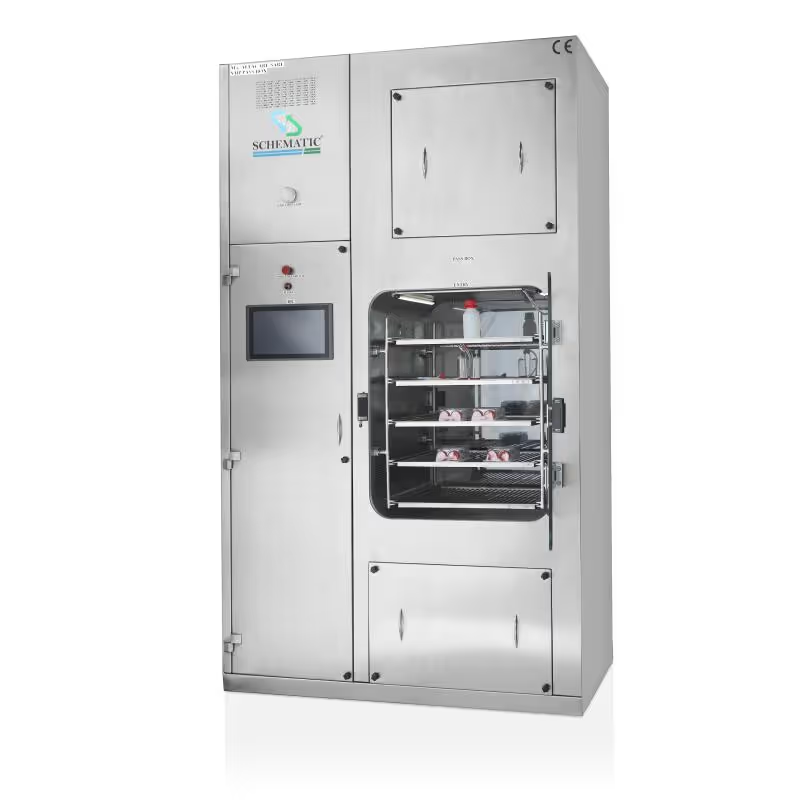
Schematic has an extensive portfolio of isolators and containment systems tailored to bulk/drug manufacturing. Examples of offered solution types include:
- Drum Containment Systems (DCS) & DCS isolators
- Powder Transfer Systems (PTS) & PTS isolators
- Sampling, Dispensing & Sifting workstations / isolators
- Reactor Charging Isolators
- Centrifuge Isolators
- ANFD (Agitated Nutsche Filter Dryer) & ANFD isolators
- Vacuum Tray Dryer (VTD) isolators
- Milling and Microniser Isolators
- Packing and Pack-Off Isolators
- Dynamic and Static Pass Boxes
- Big Bag Discharge, Spout Docking and Bagging Systems
- Glove boxes, chemical resistant isolators, liner systems, glove assist & leak testers
These modular isolators can be configured around your existing equipment or built as integrated units. Options typically include safe-change HEPA/ULPA filters, interlocked transfer ports (RTP, alpha/beta valves), CIP/WIP capability, automated pressure testing, and flexible glove port layouts.
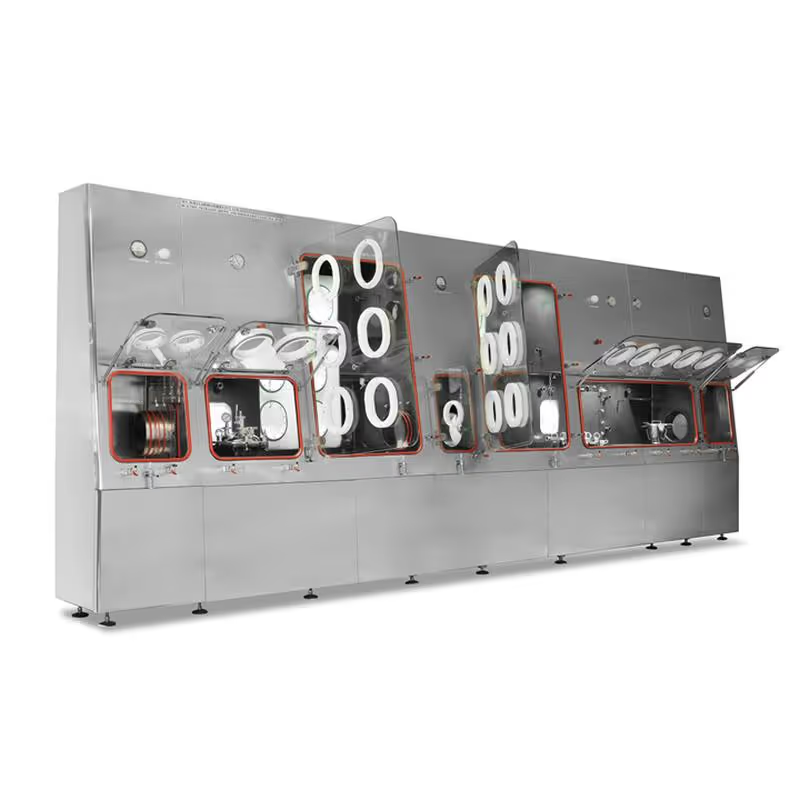
Key design features across Schematic’s isolator systems for API / bulk drug operations may include:
- Rounded corners, polished surfaces, minimal dead legs
- PLC / HMI automation, interlocks, alarms, pressure control and trending
- Automated leak / pressure testing (e.g. ISO 10648-2 or equivalent)
- Safe-change filter modules for ingress/egress of clean air
- Transfer ports / rapid transfer systems (RTP / split butterfly / liner closures)
- CIP / WIP options including spray guns, drain manifolds, utility hookups
- Flexible glove port configurations, half-suit or glove assist options
- Integration to upstream / downstream process equipment
- Cleanability, decontamination capability (e.g. vapor decon, chemical wash)


